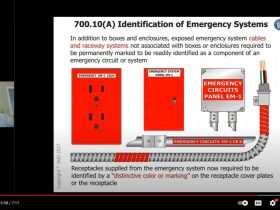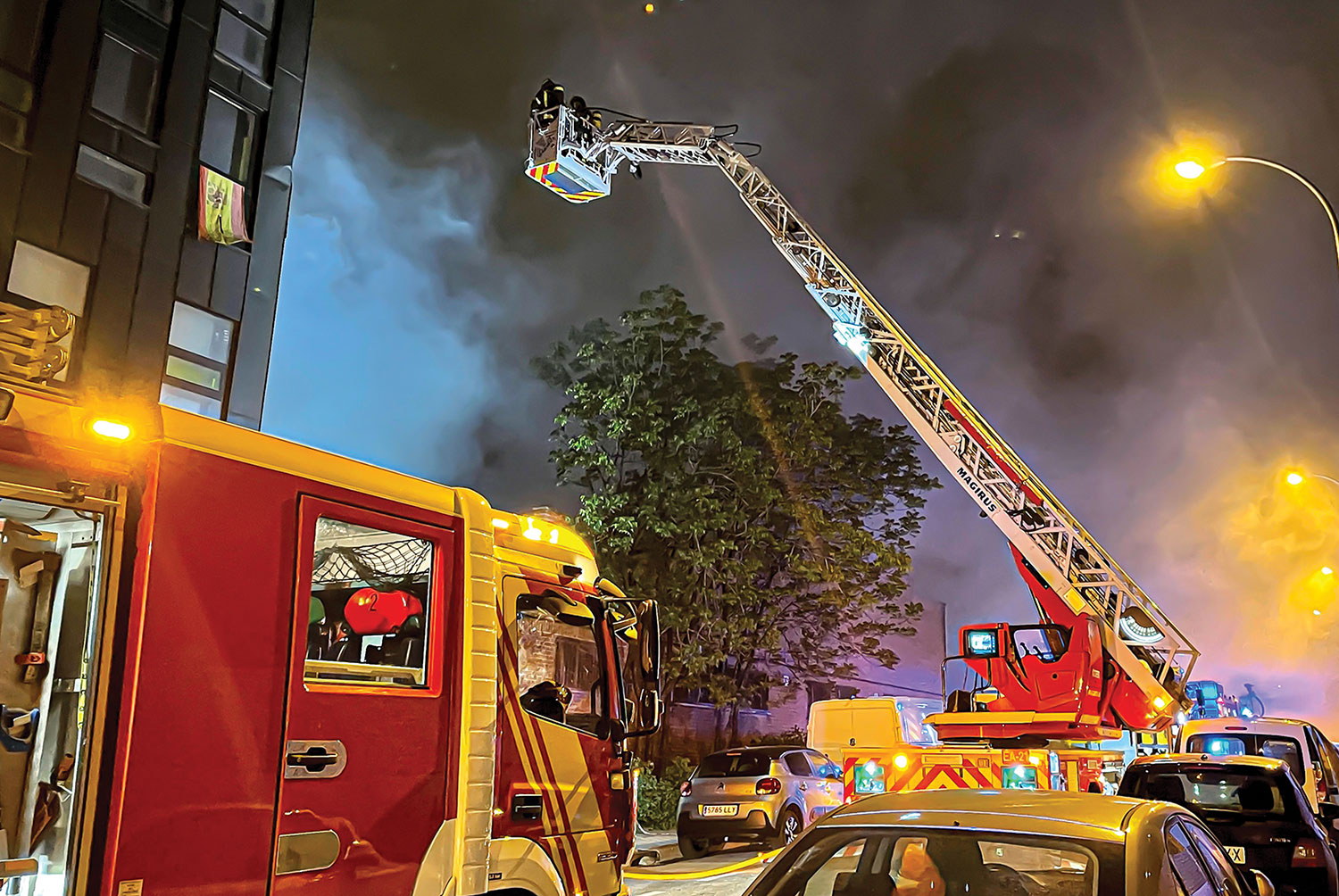Section 46 of the Canadian Electrical Code, Part I governs installation, operation and maintenance of emergency systems. However, the scope of this section might be a bit confusing to some Code users. The scope states that rules of Section 46 apply “to emergency systems intended to supply power, in the event of failure of the normal power supply, where required by the National Building Code of Canada” (NBCC).
So, what does it practically mean? Does the scope of Section 46 cover, for example, emergency systems that will provide power to the computer network in a typical office building? How about parkade exhaust fans or emergency lighting in a high building? What about an elevator or a fire alarm system installed in a 4-storey condominium? And, to make it even more interesting, would this section cover electro-medical equipment installed in a dental clinic that is located in an office building, or electrical equipment in an operating room of a hospital? Are we ready for an answer? Not quite. In order to make this answer accurate and consistent, users of the CE Code must make a trip to the NBC of Canada. Appendix G of the CEC would be a helpful guide for such a tour.
Page 478 of the 19th edition of the CEC, Part I offers a very convenient cross-reference from Section 46 of the Code to the applicable articles of the National Building Code of Canada (NBCC). One of these cross-references is dedicated to the emergency power supply for building services (elevators, fire pumps, fans— Article 3.2.7.9. of the NBCC) and another, to the power supply for emergency lighting (Article 3.2.7.4.).
Respectively, page 477 of the CEC provides a reference from Section 32 to the NBCC emergency power supply requirements for fire alarm systems (Article 3.2.7.8.).
Let’s check whether Appendix G provides any references to the NBCC in respect to a computer network in an office building? It does not appear to do so. What about any cross-references regarding the emergency power to electro-medical equipment in our dental office? The Code does not appear to be concerned with emergency power for this operation.
But would scope of Section 46 cover installation, operation and maintenance of emergency systems to supply power for the electrical equipment in a hospital operating room? Are such emergency systems required by the NBCC? The answer is a bit tricky, and we’ll come back to this subject later. So far, let’s take a look at which equipment must be provided with the emergency power by the requirements of the NBCC.
Subsection 3.2.7. of the NBCC will help us to unravel this mystery.
Article 3.2.7.4. of this subsection states that “an emergency power supply shall be provided to maintain the emergency lighting required by this Subsection from a power source such as batteries or generators that will continue to supply power in the event that the regular power supply to the building is interrupted.”
Article 3.2.7.8. requires that the emergency power for fire alarm systems must be supplied from “a generator, batteries or a combination of thereof.” And finally, Article 3.2.7.9. of the NBCC mandates that such emergency power source for the following equipment to be provided only by an emergency generator:
1. Every elevator serving storeys above the first floor in a building exceeding 36 m high;
2. Every elevator that is designated as fire fighters’ elevator. (See Article 3.2.6.5. of the NBCC for a detailed explanation of a criteria for fire fighters’ elevators);
3. Every electrically connected fire pump required in a building—to provide adequate water supply for fire fighting;
4. Smoke control fans (pressurization fans and fire dampers) required to maintain the air quality in high buildings;
5. Fans required for smoke venting (i.e., parkade exhaust fans in high buildings—that provide venting to aid fire fighting).
Now we can clearly verify our earlier questions against all conditions placed by the NBCC for the emergency power supply requirements to specific life and fire safety equipment.
It is clear now that the referenced computer network in a typical office building would not be required to be provided with the emergency power supply in accordance with the NBCC. However, in reality, many designers select the kVA rating of emergency generators so that they can carry this computer load in addition to the load of the required life safety equipment indicated in items 1 to 5 above.
Accordingly, an elevator installed in a 4-storey condominium, would not be required to be provided with an emergency power supplied by an emergency generator (it is not a high building), but a designer may want to choose this extra feature as an option.
We now know that an emergency generator would have to be installed—to supply an alternate power to the mentioned parkade exhaust fans in a high building. However, such alternate power source for the emergency lighting in the same high rise building would have to be derived from an emergency generator or from a battery. Thus, Section 46 would be applicable to the installation, operation and maintenance of such emergency equipment. Where unit equipment is utilized to provide this emergency power supply to the emergency lighting, such unit equipment must comply with the CSA Standard C22.2 No. 141. Where an emergency generator is required by the NBCC as the only alternate power source to a very specific life safety equipment (see provisions of Article 3.2.7.9.), such generator must meet all applicable conditions of the CSA Standard C282 (see Article 3.2.7.5 of the NBCC).
However, where such life safety equipment is installed in a hospital, the emergency generator supplying power to this equipment must conform to the CSA standard Z32. In addition to the requirements of the NBCC for emergency power to life and fire safety equipment this standard mandates an emergency power supply to the loads connected to the essential system branches (vital, delayed vital, conditional). These loads are prescribed by Table 8 of Z32.
Now we can respond to the earlier questions about a power supply for the electro-medical equipment in a dental office and electrical equipment in a hospital operating room. Z32 would require an emergency power supply from an emergency generator to essential system loads in a hospital operating room, but would not mandate such alternate power supply to the electro-medical equipment installed in a typical dental office.
Thus, when designers select power requirements of an emergency generator in a hospital, they take into account that all connected life and fire safety loads mandated by the NBCC must be provided with the emergency supply, and that all vital loads required with such supply by Z32 are connected to the emergency generator as well.
Therefore, installation of the emergency systems in a hospital would certainly have to be done under provision of Section 46 of the CEC.
However, as usual, local regulatory bodies with jurisdictional responsibility for these multiple applications must be consulted in each individual case of installation.














Find Us on Socials